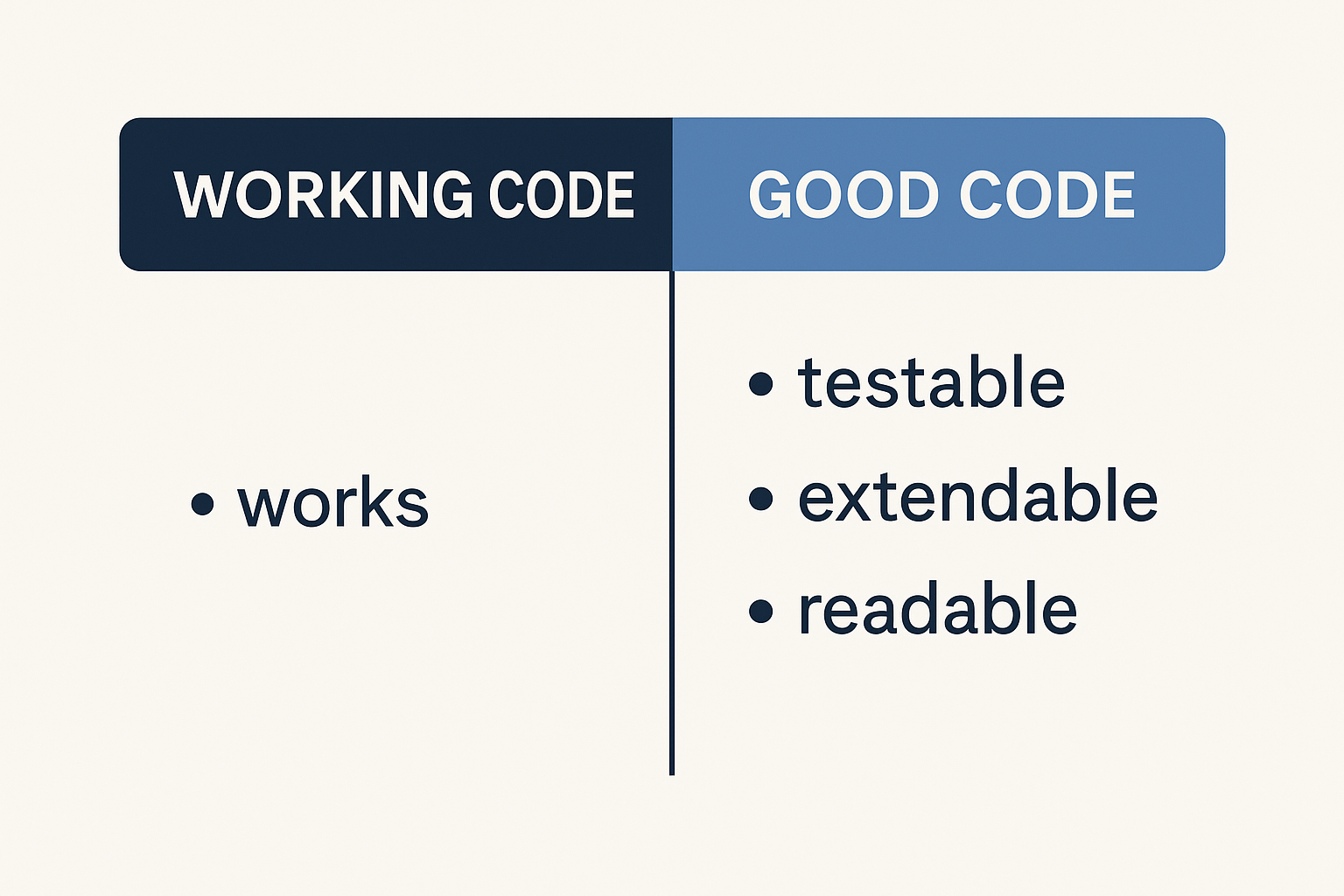
Vibe coding is here.
It’s fast, productive, and empowering. With the rise of AI-driven feature generation, entire vertical slices of functionality can be created in hours instead of weeks. For many organizations, this feels like a revolution—finally, a way to deliver value at the speed of imagination.
But there’s a hard truth beneath the excitement: producing good code is about much more than simply producing working code.
Good code is:
To achieve this, we need principles that have guided software engineering for decades: SOLID, KISS, YAGNI, DRY. These aren’t buzzwords; they’re the difference between a codebase that thrives and one that collapses under its own weight.
As we move deeper into AI-assisted development, the role of senior and lead engineers becomes more important, not less.
Lead engineers aren’t just writing code—they’re guardians of the codebase. They ensure every AI-generated feature aligns with engineering best practices. They spot when something is “clever” but brittle. They protect against technical debt that future teams would otherwise drown in.
In short, they make sure vibe coding doesn’t become vibe chaos.
Here’s the challenge: what happens to the next generation of developers?
Traditionally, junior engineers learned by writing lots of code, making mistakes, and absorbing feedback during reviews. Over time, they developed an instinct for what “good code” looks like.
But in a world where AI generates much of the code, new developers may never get the same exposure. They may review code, but without knowing what “good” is, they won’t know what to look for. The pipeline of engineers capable of managing and safeguarding this new AI-driven process risks shrinking.
This is the paradox: AI accelerates delivery today but could erode the engineering skill base of tomorrow.
So what do we do?
If we get this right, vibe coding won’t just change how we build software—it could change who gets to participate. The risk is real, but so is the opportunity.
The future of coding isn’t just about speed. It’s about ensuring that the craft of engineering remains strong in the age of AI.